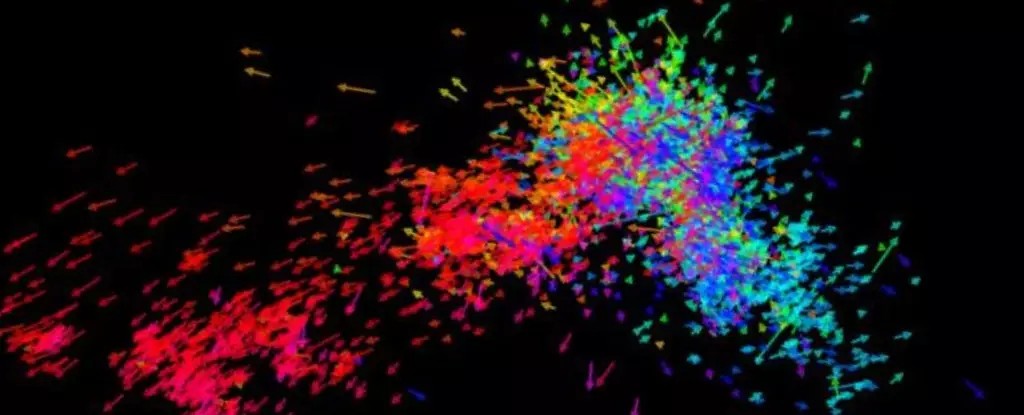The universe, with its everlasting dance of celestial objects, is anything but static. Among its astonishing spectacles, the drama unfolding in the Small Magellanic Cloud (SMC) warrants attention as it’s revealing just how violent and dynamic the cosmos can be. Researchers from Nagoya University have observed compelling evidence that the SMC is not merely a bit of space debris, but an active participant in a cosmic struggle against the gravitational pull of its larger neighbor, the Large Magellanic Cloud (LMC). The implications of this discovery reach far beyond just two dwarf galaxies playing tug-of-war; they challenge our conventional notions of galactic evolution and provide a rare glimpse into the interactions that shape the universe.
The Significance of the Magellanic System
The Magellanic Clouds, named in homage to explorer Ferdinand Magellan, are more than mere observational landmarks in the Southern Hemisphere. Situated approximately 160,000 light-years for the LMC and about 200,000 for the SMC, they are rich repositories of gas and young stars, offering a fertile ground for studying the very foundations of cosmic structure. Together, they form a network connected by the Magellanic Bridge—a gaseous filament that acts as a conduit, linking their destinies as they spiral around the Milky Way. This grand cosmic tableau showcases not just the beauty of the universe, but also the precariousness of existence for these smaller galaxies caught in the gravitational grip of our own galaxy.
Unforeseen Stellar Dynamics
The team, under the guidance of Satoya Nakano and Kengo Tachihara, made a groundbreaking observation: the stars of the SMC exhibit patterns of movement that are anything but normal. By tracking 7,000 massive stars within the SMC—each over eight times the mass of our Sun—they discovered a troubling dynamic: some stars are hurtling toward the LMC while others are retreating from it. This counterintuitive motion suggests that the SMC is being subjected to powerful tidal forces that could spell its doom. The violent gravitational interplay capturing the SMC serves as a rich source of cosmic information, underscoring how star systems can be disrupted in the face of overwhelming external forces.
Breaking Traditional Paradigms
A particularly striking revelation from the researchers was the lack of rotational movement among the massive stars in the SMC. In contrast to the Milky Way—where stars typically orbit in a harmonious rotation around a central mass—the SMC’s stellar population defies such expectations. This lack of synchronous movement suggests that the gas, which normally swirls around like a cosmic merry-go-round, is not participating in the dance at all. Instead, this observed behavior raises serious questions about the fundamental processes of star formation and interaction in dwarf galaxies.
The implications are vast; researchers may need to re-evaluate their calculations regarding the SMC’s mass and its relationship with both the LMC and the Milky Way. With gas and stars behaving differently than expected, it pushes scientists to rethink how galaxies interact on a gravitational scale, which could reshape our understanding of cosmic mechanics.
Galaxy Formation and the Cosmic Puzzle
The ongoing disruptions faced by the SMC are not merely an instance of cosmic chaos but are viewed as a key to understanding galaxy formation as a whole. Analogous to primordial galaxies, the SMC provides a living laboratory for researchers exploring how galaxies evolve through interaction and merger. By meticulously observing the stellar motions of both the SMC and LMC, scientists can forge connections between star formation processes and broader galactic dynamics, thereby piecing together a more intricate understanding of the universe’s tapestry.
This dynamic mutually instructive relationship between the two Magellanic Clouds offers an unprecedented window into the mechanics of galactic disruption, revealing that the cosmos is a far more complex and riveting place than previously believed. As such, the study not only enriches our comprehension but amplifies the grandeur of the Constellation of Galaxies that forms our universe. The SMC’s plight may ultimately serve as a touchstone for grasping the life cycles of galaxies, reshaping our perspective as we endeavor to uncover the secrets of the cosmos.


Leave a Reply